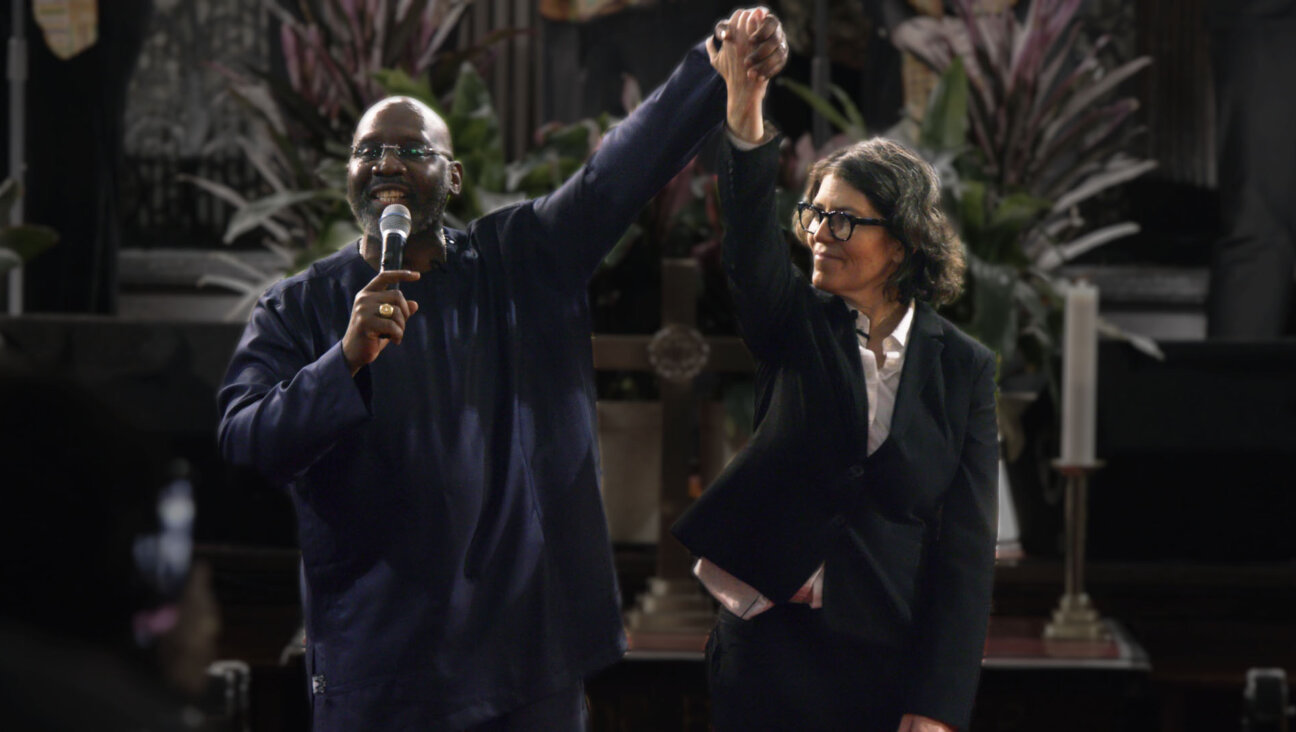Getting Schooled in Tzedakah
For Andrea Engel, giving to charity and volunteering for charity work — two basic facets of tzedakah — came as second nature. As a high school student in Birmingham, Ala., she headed her B’nai B’rith Youth Organization fundraising effort. As a Northwestern University undergraduate in suburban Chicago, she served on the executive board for the university’s huge marathon fundraiser and raised money for the Jewish United Fund/Jewish Federation of Metropolitan Chicago.
So it made perfect sense when she decided, as a law student at the University of Pennsylvania, in Philadelphia, that she wanted some academic grounding in charity work. “All my experiences had been very ground based — I asked people for $5 donations. I was looking for some fundraising instruction on an institutional level,” she said.
The law students, Engel found, were focused on corporate law studies and not generally interested in training outside that scope. But then she came upon an elective in Penn’s School of Social Policy and Practice — a course taught by Eileen R. Heisman, president and CEO of the National Philanthropic Trust. The trust manages more than $665 million in charitable assets and has overseen more than 37,000 grants to charities in 27 countries.
Engel, now 25 and a banking lawyer in Chicago, had found her course: philanthropy and fundraising for managers of not-for-profit organizations. Other graduate students, too, are finding such courses because giving has become a subject that merits academic training — whether it’s for students interested in raising money, running not-for-profit corporations that depend on fundraising or that make grants, or sitting on boards of not-for-profit institutions.
Studying the art, laws and everyday details of fundraising and philanthropy makes sense, because “if you don’t have money for your social mission, you can’t accomplish your goals,” Heisman said. The Giving USA Foundation, an organization that tracks funding patterns, reports that 83% of the $306 billion in charitable gifts in the United States comes from individuals — about 2% of the gross domestic product.
Heisman’s is a survey course with case studies and, sometimes, guests instrumental to them. Among her assignments is a study of a 19th-century and a modern-day philanthropist. “I want [students] to see that the old guys were pretty inventive,” Heisman said. (Engel’s study was of two Jewish immigrants to America: Jacob Schiff and George Soros.)
“I feel like students can have a jump-start,” Heisman said, “giving people a chance to learn what I had to learn on my own. It wasn’t even a topic in college.”
Many of Heisman’s Penn students eye careers in charity, ultimately desiring to run a charitable organization. The courses that Richard Marker teaches at New York University’s George Heyman, Jr., Center for Philanthropy — where he chairs the Academy for Grantmaking and Funder Education — are for people who already are philanthropists or who work in the philanthropic world.
Marker, co-principal of Marker Goldsmith Philanthropy Advisors, has helped to develop a certification program “built on the core competencies anyone who’s going to be spending time as a grant maker should have.” Marker, who is a rabbi and a former CEO of the Samuel Bronfman Foundation, says he never had formal training in philanthropy “and I discovered quite quickly that almost nobody had.”
The certificate program consists of seven courses, which is about 100 classroom hours, and generally trains three types of students, who come from all over the world. The first group is funders, working in foundations or independently. A second group works already as grant makers — officials in public charities, for instance. A third group is composed of wealth managers, “people who work professionally with people who are philanthropic,” Marker said.
But the majority of Marker’s students do not pursue a certificate. They want formal training in specific subjects, such as family philanthropy issues — a topic that also draws people to full-day seminars that Marker runs three times annually.
The graduate students at Brandeis who come to David A. Mersky’s classes in the school’s Hornstein Jewish Professional Leadership Program are directed toward fundraising, specifically for Jewish groups. “They are going to be heads of Jewish federations of Jewish community centers, or directing a wide range of programs in the Jewish community,” said Mersky, also a rabbi and former development chief of the Combined Jewish Philanthropies of Greater Boston. He is currently managing director of Mersky, Jaffe & Associates, a consulting firm for non-for-profit and private businesses.
Fundraising in Jewish com- munities has traditionally been centralized — Mersky cites UJA-Federation campaigns as an example — with volunteers approaching donors each year. It’s not been substantially dependent on long-term bequests. “We’ve never been quite that patient,” Mersky said. “We’ve often been dealing with very urgent matters of rescue and refuge. We need cash now.”
One of Mersky’s aims is to help students understand that they’re entering a world of more professional fundraising, “a field in significant transition. They’re going to have to come to grips with volunteers and donors who remember it the way it used to be,” Mersky said.
He says that many of his grad students come to the classes after an experience With Taglit-Birthright Israel: “They’re recommitting their lives to the Jewish community.” Students realize, Mersky said, that a fundraising career in the Jewish community “is a huge opportunity to make a real difference — and have a real impact.”
Howard Shapiro is a theater critic for the Philadelphia Inquirer and also writes about travel.
A message from our Publisher & CEO Rachel Fishman Feddersen

I hope you appreciated this article. Before you go, I’d like to ask you to please support the Forward’s award-winning, nonprofit journalism during this critical time.
We’ve set a goal to raise $260,000 by December 31. That’s an ambitious goal, but one that will give us the resources we need to invest in the high quality news, opinion, analysis and cultural coverage that isn’t available anywhere else.
If you feel inspired to make an impact, now is the time to give something back. Join us as a member at your most generous level.
— Rachel Fishman Feddersen, Publisher and CEO






















